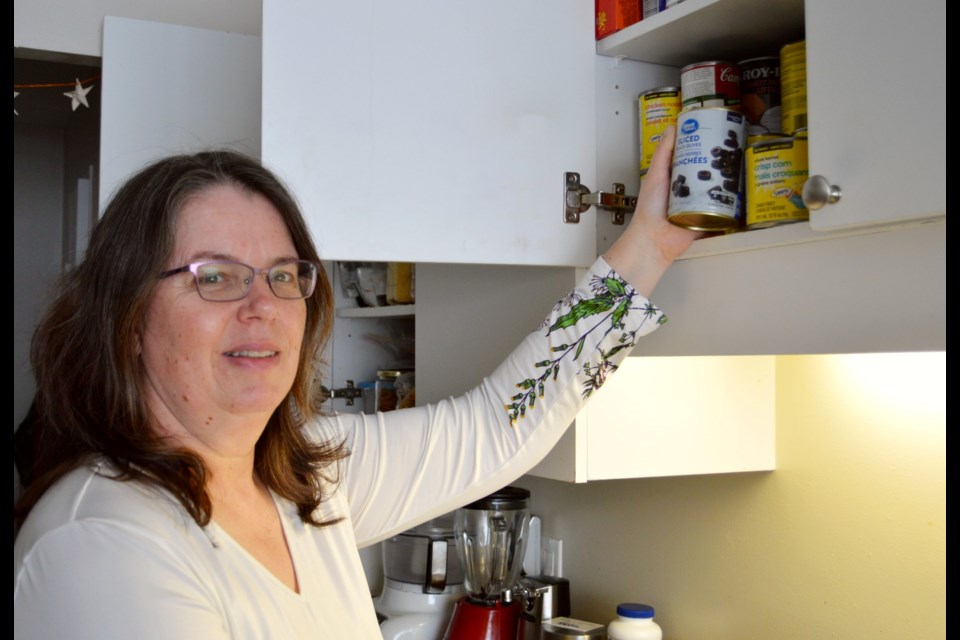As grocery prices continue to rise, parts of Guelph are stuck in food mirages, where neighbourhoods may have grocery stores nearby, but being able to purchase affordable healthy food is key to the illusion of food accessibility.
Maude Stephany lives in a Guelph food mirage.
Stephany and their family of three live downtown and don’t have access to a car. Their options for a nearby grocery store is Market Fresh. And they only use it when they are in a pinch.
Stephany’s family sit down to make their menu for the week which informs their grocery list. Much of the shopping falls on Stephany, whose wife is still recovering from surgery.
They typically go to No Frills or Food Basics by bus or if the weather permits, they walk with a shopping buggy in tow.
This year Stephany has tried to be a bit savvy by using Flashfood, an app to find discounted food at varying grocery stores. The only obstacle is Stephany has to coordinate with friends to see if they can pick up the food for them.
They have noticed the price of fruits, vegetables and meat have gone up. They have since reduced the amount of meat they consume based on the price.
“We look at more than just the cost. It’s also how much time is this going to take away from other things that we are trying to do to keep body and soul together,” said Stephany.
“The people that live downtown are not well off. Some of us are … having issues paying the rent,” they said.
The issue of Stephany’s access to food is echoed by professors from the University of Guelph (U of G).
“It refers to a situation where one thinks that there is fairly plentiful food options. When it comes right down to it, given the price of the food that is available, it's not accessible to a substantial part of the community. It’s just too expensive,” said Tony Winson, a retired U of G sociology professor who still does research.
In particular the downtown core of Guelph, he said. Not only the core but the east end of Guelph too.
“Even if you could afford some of the options downtown retailers offered, they are just that much more expensive, so that much out of reach,” said Winson.
The food options that have been created in the downtown core are "more high-end, more gourmet, more focused on organics ... which tend to be a higher price," he said.
“The problem is really an income problem more than a food problem. It’s not as if food isn’t available,” said Winson.
Spending more than 15 minutes on transit to access a grocery store just isn’t doable for some people, especially if they work more than one job and have a family, adds U of G associate professor Phil Loring.
“And so it's really the food mirage issue is part and parcel to a broader sort of intersection of economic challenges that people in our community and other communities like ours are facing,” said Loring.
“I do think that the more people who have the economic means to participate in the local food economy, the more that local food economy will grow, and bring the price down. So even more people have access to it.”
There is still no Loblaws-brand grocery store in the east end of Guelph at Starwood Drive and Watson Parkway, Loblaws owns the land, but has yet to build anything. “Because they have put so much money into stores elsewhere in town,” said Loring.
It’s a two-sided issue, one side being the city continuing to develop services for car users and the other is “... corporations not willing to develop their food infrastructure around communities,” said Loring.
Jude Keefe built a map of Guelph outlining the various types of grocery stores, convenience stores, community gardens, wildlife and pollinator gardens in the city. It shows gaps in the food system.
“I would say it does the best job of showing the resources that you might not think of that are nearby that you could fill gaps with. Whether or not it's a garden or a convenience store,” said Keefe, geographic information systems (GIS) specialist for COIL and Our Food Future.
The map gives a hyper localized view of what food retail options are available.
“But from just a nutritious food access piece it does show that a lot of the more affordable options are pushed to the edges,” she said.
